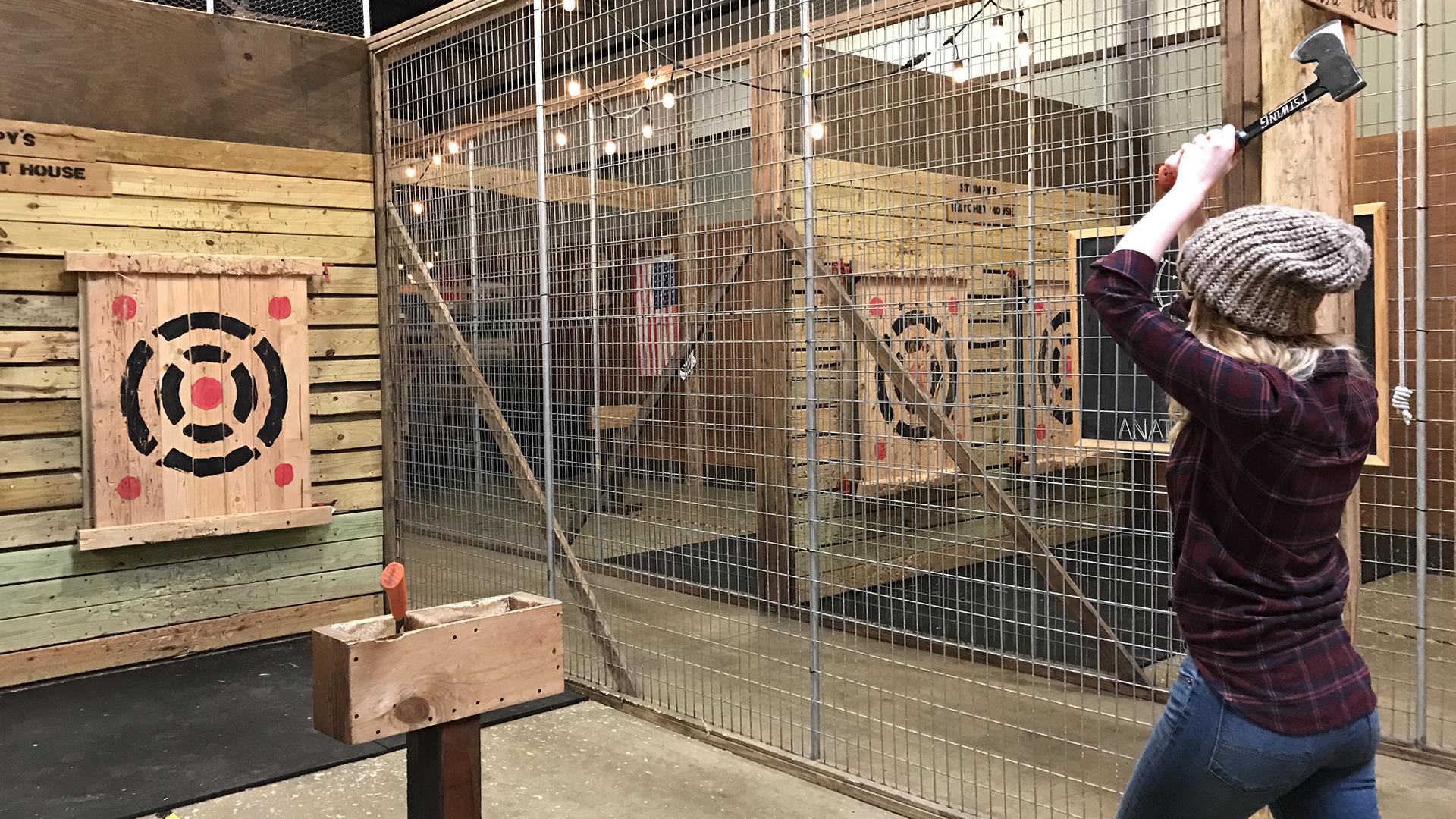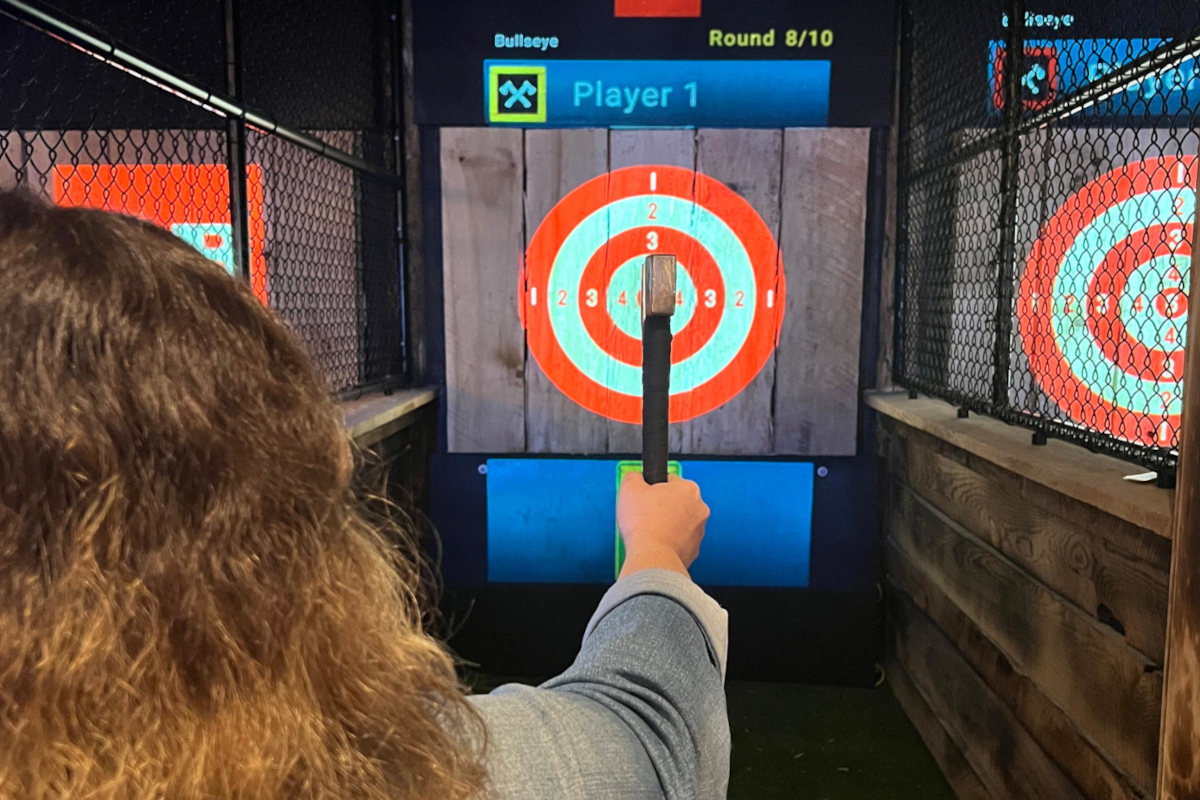Axe Throwing Denver: A Special Date Night Concept That Excites
Axe Throwing Denver: A Special Date Night Concept That Excites
Blog Article
The Fun of Axe Throwing: How This Sport Combines Skill and Adrenaline for a Fun Time
Axe throwing has arised as an astounding sporting activity that masterfully links the requirement for accurate ability with the thrill of adrenaline, offering participants a distinct and appealing experience. The act of tossing an axe towards a target demands focus and technique, all at once cultivating an atmosphere of camaraderie and friendly competition.
The Origins of Axe Throwing
Axe throwing, a leisure task that has actually gotten substantial popularity in recent years, traces its origins back to ancient times. The earliest records of axe usage in competitive contexts are found amongst the Celts and Vikings, that threw axes for sporting activity as well as in combat training.
Medieval European warriors, particularly during the Center Ages, exercised axe throwing as component of their martial training. The Francisca, a kind of tossing axe used by the Franks, became legendary for its lethal precision. This traditional weapon was created to be thrown at enemy shields and shield, showcasing its twin energy in both sporting activity and battle.
In more current background, axe tossing saw a rebirth in the logging camps of North America in the 19th and 20th centuries. Lumberjacks would take part in friendly competitors, evaluating their accuracy and stamina by focusing on wooden targets. This evolution from a survival skill to an entertainment task has led the way for its modern-day resurgence, with committed places and leagues now commemorating the sport around the world.
Devices You Need
Understanding the abundant history of axe throwing enhances the appreciation of the sport's modern-day version. Central to this thrilling activity is the equipment, which is vital for both safety and security and performance. The primary device is, naturally, the axe. For leisure and competitive axe throwing, one of the most typically utilized type is the hatchet, typically evaluating between 1.25 to 2 pounds with a take care of length of around 16 inches. The axe needs to have a sharp, well-kept blade and a handle made from long lasting wood or composite product, ensuring an excellent grip and balance.
Equally important is the target. Guideline targets are built from timber, with softwood ranges like pine or cottonwood being chosen for their capacity to absorb and hold the axe. The target is typically separated into 5 concentric circles, each with a specific factor worth, to promote scoring.
Safety and security equipment, though commonly neglected, is crucial. Safety handwear covers can boost grasp and avoid blisters, while closed-toed footwear are a should to shield feet from gone down axes (denver axe throwing). A well-lit, large throwing area, complete with safety obstacles, makes sure a regulated atmosphere where individuals can focus on sharpening their skills.
Basic Techniques Explained
Mastering the basic methods of axe throwing is vital for both safety and security and proficiency. The initial technique to recognize is the grip. Hold the axe with a company, yet relaxed grip, comparable to holding a golf club. The dominant hand should be positioned straight listed below the axe head, while the non-dominant hand supports the end of the take care of.
Next, focus on the position. Stand with your feet shoulder-width apart, guaranteeing your body is balanced. Your dominant foot should be slightly onward, lining up with your target. This positioning help in preserving security and routing power properly towards the target.

Safety First
Making sure safety and security in axe throwing is paramount to developing a enjoyable and injury-free experience. Precaution begin with the location format. A properly designed axe tossing center features clear separations between tossing lanes, strong backdrops to capture roaming axes, and non-slip floor covering to prevent mishaps. Additionally, ample illumination is critical to help participants keep aesthetic precision and spatial awareness.
Advantages of Axe Throwing
Axe tossing deals a myriad of advantages that extend website link past basic entertainment. The repeated movement of throwing the axe likewise enhances hand-eye sychronisation and fine motor abilities.
Emotionally, axe tossing needs emphasis, accuracy, and method, making it an outstanding means to develop cognitive skills. The concentration required to hit the target can work as a type of mindfulness, enabling individuals to clear their minds and reduce stress. This psychological engagement can be specifically beneficial in aiding individuals create better problem-solving abilities and mental strength.
Socially, axe throwing is typically appreciated in team settings, cultivating team-building and sociability. Whether as part of a business event or a casual getaway with close friends, the sporting activity motivates interaction and partnership. Furthermore, the common experience of discovering and improving together can enhance connections and create long lasting memories.
Verdict

The earliest records of axe usage in affordable contexts are discovered amongst the Celts and Vikings, that tossed axes for sport as well as in fight training. Release the axe when your hands are approximately at eye level, allowing the axe's natural rotation to direct it in the direction of the target.
A properly designed axe throwing facility features clear separations in between tossing lanes, sturdy backgrounds click this to capture stray axes, and non-slip floor covering to stop crashes. Individuals need to be advised on the proper method to take care Get More Information of and throw the axe, highlighting regulated, intentional motions over forceful throws.
In summary, axe tossing stands out as a sport that masterfully integrates accuracy, adrenaline, and ability.
Report this page